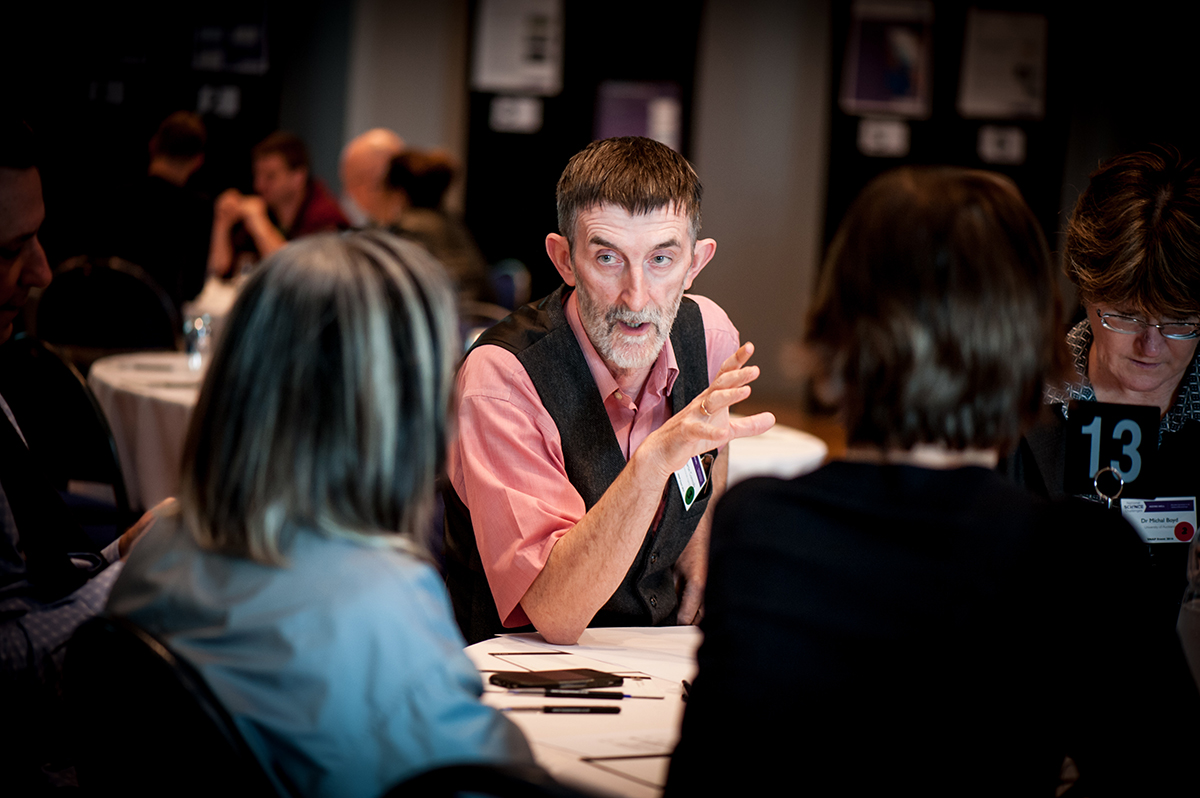Retirement villages are popping up all across Aotearoa New Zealand. Designed as a safe, shared space for older people, retirement villages offer an appealing lifestyle for the many older people looking to downsize and stay connected with supportive peers.
A recent estimate suggests that approximately 39,000 people live in New Zealand’s retirement villages, a threefold increase since 2008, and perhaps representing as many as one-eighth of all Kiwis over 75. Demand to stay at a retirement village has yet to reach its peak, as our ageing population will continue to balloon over the next few decades.
And yet, despite the increasing importance and popularity of retirement villages in New Zealand, researchers know very little about these semi-closed communities. Demographic information, social engagement, health, and disability issues – much of this remains unexplored.
Ageing Well Principal Investigator, Professor Martin Connolly, wanted to learn more. The Head of Department of Geriatric Medicine at the University of Auckland, Professor Connolly realised that obtaining this information would allow policymakers to plan prospective treatments and strategies for vulnerable residents.
“The basis for the current study”, Professor Connolly relates, “was our belief that retirement village residents may have multiple unmet needs together with declining medical and functional ‘trajectories’, and that a targeted intervention might, for example, decrease the risk of hospitalisation.”
Essentially, the research team wanted to find and help vulnerable residents with their health difficulties so that they could stay well, and avoid entry into hospital or aged care facilities. Such an outcome would be good for all concerned, as it would identify issues before they became too acute, and thus reduce the future demand on the healthcare system.
Despite the increasing importance and popularity of retirement villages in New Zealand, researchers know very little about these semiclosed communities.
About the project
The project was ambitious, with three separate but connected phases. The first phase sought to conduct a survey. Residents and village managers would be asked to participate and provide a variety of information, including health and social information. The second phase drew on a cohort of participants and tracked the trajectory of their health over three years, looking for adverse outcomes. A final phase involved a Randomised Controlled Trial, which aimed to test interventions to see if they made a difference to the health and wellbeing of the most vulnerable residents identified in the second, cohort phase. Overall, the project hoped to gather data on residents, and identify and help potentially vulnerable residents.
However, the research was stymied slightly by a number of unforeseen factors. Recruiting a representative sample of residents from 34 Auckland villages (those who agreed to participate in the project) proved extremely difficult. New Zealand legislation prevents residents participating in research if they “lack” the capacity to consent (even when they have an appointed “Power of Attorney”). Everyone with a cognitive score under a certain level (potentially people the researchers would want to find ways to help) had to be automatically excluded.
Another stumbling block was physical access to potential study participants. Many village managers, citing resident privacy, were unwilling to let researchers recruit for the study in the planned manner. Letter drops and door-knocking were often prohibited, except in some cases where a residents’ meeting agreed to them. Other recent international research has struck similar problems, Professor Connolly noted.
These barriers led to a skewed sample of potential participants. Of the 34 villages, only 11 permitted researchers to obtain a randomised sample of residents. Non-random volunteers made up the remaining participants from the other villages. Given the relatively low participation of villages (34 of 53 contacted), lack of representative sampling, and the fact that the resident response rate was low (approximately 35%) in the 11 villages with random sampling, it is likely that many more such residents were unaware of the study, or were “excluded” by village managers, Professor Connolly explains.
The study revealed that partnership between healthcare service providers and village operators may be the key to introduce new initiatives that better meet residents’ needs.

Professor Martin Connolly
Even so, 578 residents from 33 villages did participate. Armed with imperfect but pioneering data, Professor Connolly’s team was still able to reach important conclusions. Eighty two, for instance, was the median age of residents; only 27% were men; and 61% lived alone.
Vaunted for their sense of community spirit and peer togetherness, the study found that retirement villages were not immune to loneliness: 39% of residents described feeling lonely “sometimes”, “often” or “always”. As one resident put it, “we’re independent, so it’s left up to us [to socialise].” Downsizing (77%), less stress (63%), and access to healthcare assistance (61%) were the most common reasons for entering villages.
Residents did not always thrive in villages. High blood pressure, heart disease, arthritis and pain were reported by over 40%. Many struggled to manage heart and lung conditions (50%) and pain (48%), which proved to be where the most “unmet need” was. Evidently, to ensure that residents’ health and wellbeing thrives, new initiatives are needed.
Conclusion
The results provide a new opportunity to “better manage” the health conditions and care of village residents, Professor Connolly concluded. Partnership may be the key. He believes healthcare service providers and village operators could “cooperate” to introduce new initiatives that better meet residents’ needs. Such an approach would benefit both sides, he argues.
As noted elsewhere in some of Ageing Well’s other projects (such as those run by Professor Gott and Drs Keeling and Jamieson), loneliness is a major challenge for older New Zealanders, but not something that policymakers may have thought would be an issue at retirement villages. The study recommended looking for ways to identify loneliness early, and to carry out proactive interventions that positively improved residents’ wellbeing.
Retirement villages are a booming industry. They are fast becoming the de facto retirement alternative to living at home or entering an aged care facility. This timely, novel study represents the largest investigation into the health and wellbeing of residents in New Zealand retirement villages.
This research is ongoing, and the information gathered will inform policymaking and future interventions at both the local and national level. It is to be hoped that as interventions are developed as a result of this study, retirement village residents can stay healthier and connected for longer and avoid burdensome and premature entry into hospitals and aged care facilities.

